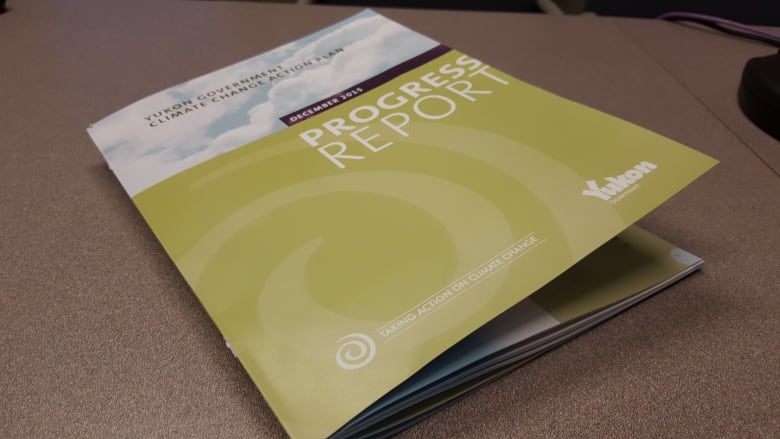Yukon's climate change plan update lacks new data
Government's 2009 action plan set emissions targets, but data to show progress is lagging

The Yukon government says it is making good progress on its six-year-old "Climate Change Action Plan," even though some key measurements are several years old.
Today, the territorial government released a progress report on their 2009 Climate Change Action Plan,outlined a number of goals and targets for reducing greenhouse gas (GHG) emissions, as well as measuring and adapting to the effects of climate change.

"The Government of Yukon will know if it has reached its 2015 internal GHG emissions goals in 2017. It typically takes about 18 months to complete the work," the report states. It says the last measurements, from 2012, show government emissions were down 2.3 per cent from 2010.
A similar lag in data gathering from the transportation sector means it's unclear whether those emissions have gone down either. A 2012 report found that transportation accounted for 57 per cent of all emissions in Yukon.
The update also suggests that some Statistics Canada data on Yukon's fuel use may be inaccurate, so pre-2012 emissions may have been underestimated.
"The Yukon Bureau of Statistics is working with Statistics Canada to address these data issues," the update report says.
The new report also details other emission reduction targets for the transportation, electricity and building sectors, but says most targets are to be achieved in the coming years, "beyond the date of this publication." Still, it cites some modest reductions as "progress that may not have been made without a target to aspire to."
Another 2009 goal was to make the government carbon neutral by 2020, but it's also unclear whether things are on track to achieve that.
"Efforts have begun on developing options for achieving carbon neutral government operations," the update report states.
"I don't think in the report it's actually gone into saying specifically what's been completed and what hasn't been completed," said Kirsten Burrows, with Yukon's Climate Change Secretariat.

28 new initiatives
The new update also lists "28 new climate change actions," many of them geared toward adaptation to climate change.
Those initiatives include using new road construction methods to preserve permafrost, and developing maps to better understand possible flood risks. The government also wants to develop guidelines for mine projects to factor climate change into future plans.
Other goals include replacing things such as old government vehicles and boiler in schools for newer, more efficient models, and looking for ways to supply biomass heat to some government buildings.
"The Government of Yukon is learning from its successes and will continue to plan for the climate change challenges the future will bring," the report concludes.